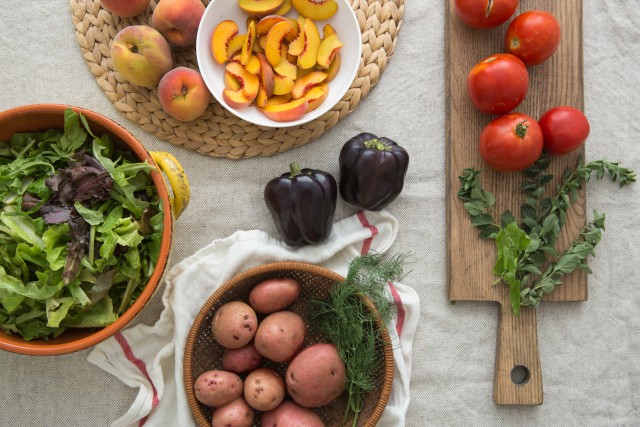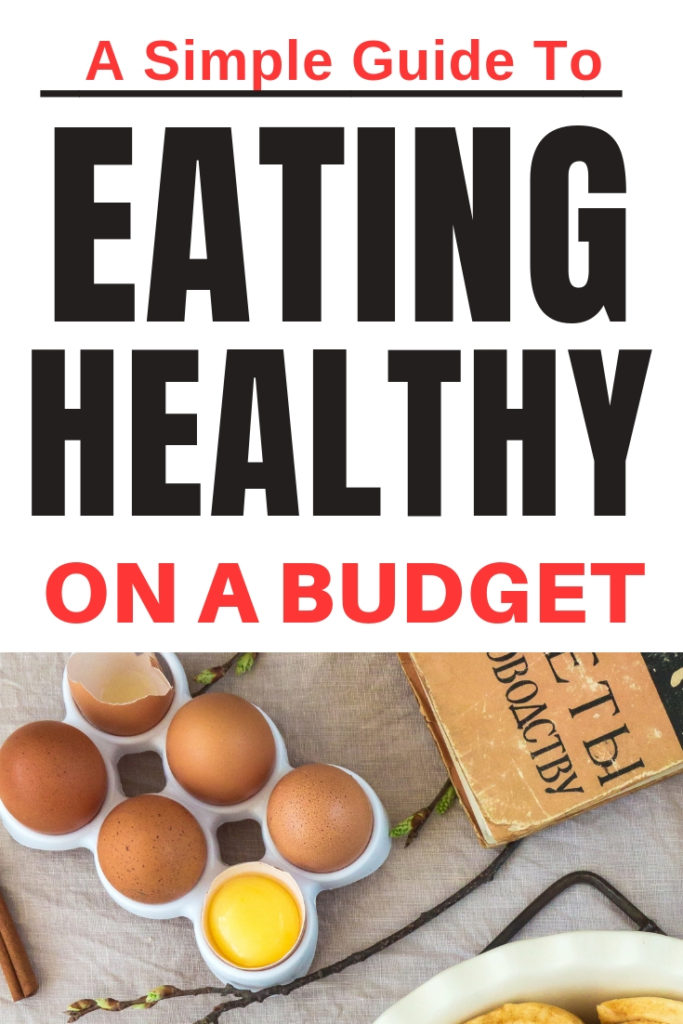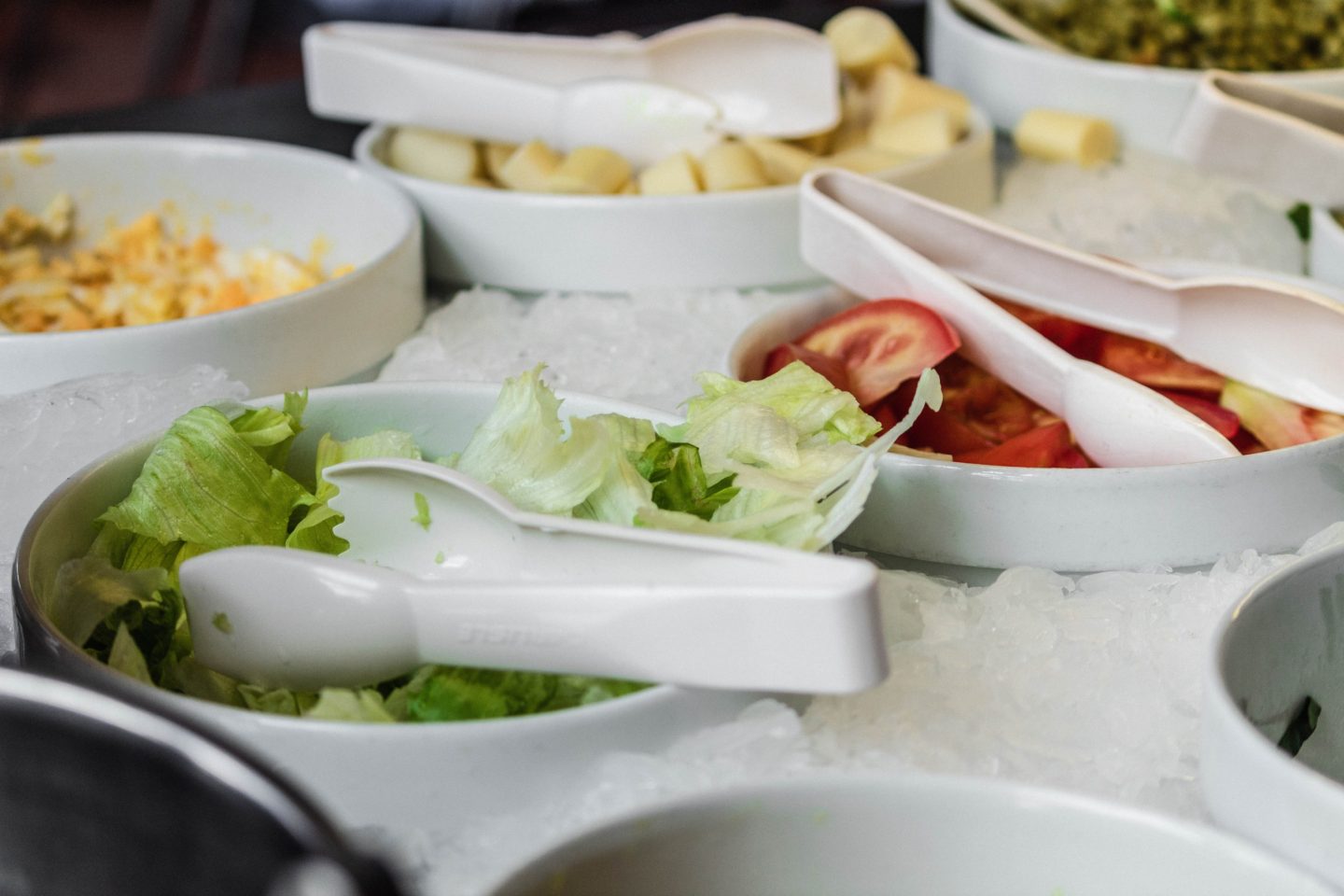
Wanting to eat healthy can be quite a challenge when you have a busy lifestyle. When you have limited funds, trying to eat healthy on a budget seems even more difficult because it seems that the best healthy foods are expensive.
But challenging doesn’t mean impossible. Here is a simple guide to eating healthy on a budget.
How to Eat Healthy on a Tight Budget
1. Create a Healthy Eating Plan
A healthy eating plan (or meal plan) is a basic outline of the foods that you’re going to eat in a particular week.
It helps you to save time and money by planning your meals in advance and taking advantage of all the foods that you have. It also helps you to purchase foods that will use completely.
Take Your Macros Into Consideration
This is important because you want to ensure that you’re eating the right combination of foods to achieve your health goals. Whether you want to lose weight, gain weight, reduce your consumption of sugar, or anything else, this process will help you get clarity in your healthy eating plan.
The average sedentary woman should eat around 46g of protein {1}, 225-325g of carbs {1} and 44-78g of fat per day {1}. This information can help you to plan your meals for maximum nutrition.
2- Make a List Of Healthy Foods To Eat
Because we want to eat healthy on a budget, we want to avoid that are expensive to purchase or source.
At the same time, you want to ensure that you’re hitting your macronutrient goal daily. The place that people tend to fall short is protein, so let’s get some ideas for healthy and affordable protein options that are easy to prepare.
- Eggs– 2 large eggs= 12g
- Natural peanut butter– 2 tbsp= 8g
- Canned tuna– 1 can tuna= 20g
- Black beans– 1 cup black beans= 15g
- Lentils– 1 cup lentils= 18g
- Tofu– 1/2 cup tofu= 20g
- Whey protein– 1 scoop= 20g
- Oats– 1/2 cup= 13g
Other options include chicken, fish, garbanzo beans, quinoa, and canned salmon, etc. Beans are a regular for me because they are easy to prepare once they’ve been pre-soaked overnight.
They are also great for batch cooking which can save you a ton of time. They can be cooked and stored in the freezer for weeks. Plus, they’re very budget friendly.
If you don’t like beans, tuna, chicken, and eggs are some fast and easy protein options. And of course, you can add your personal.
For carbs, you can use fruits, vegetables, whole grains such as oatmeal, potatoes, quinoa and wheat pasta/flour/rice.
For fats, you can consider coconut oil, olive oil, avocado oil or your favourite healthy oils, There’s also avocado, eggs, nuts, and nut butter.
So after you have identified where you want to get your carbs, proteins, and fats from, you can move on to some shopping hacks to help you save money when your buying groceries on a budget.
Related:
Shopping Hacks For Eating Healthy On a Budget
Instead of haphazardly going to buy food 2 or 3 times for the week, you can try these strategies to save money and time. If you’ve created your basic meal plan then you have an idea of what you need from the local market and supermarket.
Shopping Hack #1- Choose a day to shop at local markets for seasonal produce
Is there are a day when there’s a lot of vendors at your local Farmer’s Market?
Chances are high that you can buy more fresh produce at lower prices. That happens every Wednesday and Saturday at my local market, so those are the two days when I’ll go shopping. I’ll spend roughly $15 to $20 on some great stuff, and spend less than an hour doing it.
You can try to save time by doing this with another activity that would take you out of the house and in the same general direction. If you still don’t have the time or a local market near you, you can purchase the items in a supermarket.
You can save money if you purchase seasonal produce in either location.
Shopping Hack #2- Shop in bulk
No, I’m not going to tell you to purchase everything in bulk because that would defeat the purpose of this article.
However, based on your general diet, there are some essentials that you use every day. These things may include cooking oils, spices, coffee, and grains.
If you buy smaller packets of nuts often, then you could purchase these in bulk too. Other items that you can purchase in bulk are flour, dried beans, and canned goods.
Shopping Hack #3- Shop on Sale
It doesn’t matter where you choose. Discounted stores will help you to save money because the items are already discounted. You can also purchase your canned products and pantry essentials in bulk to save on money and time.
Note: You don’t have to buy 100% organic
The term ‘healthy’ has become synonymous with ‘organic’ in some places. That doesn’t have to be the case, especially when organic is sometimes as much as 5x the price of regular food.
Unless you have a strong preference for it or you have access to some reasonable prices, you don’t need to buy 100% organic when you are eating healthy on a budget.
Here’s why I say this.
There are some items that you should absolutely try to get organic if you can because they might have higher pesticide residues. These are foods like berries and leafy greens that are openly exposed.
However, there are other foods that I personally don’t worry about that much if they are not exposed directly. These are foods like nuts, bananas, and other foods with a layer that will be peeled off before eating.
If you’re not concerned about organic/regular produce, that’s totally fine as well.
Once you have your food ready, it’s time for the last healthy eating on a budget hack. Meal Prepping.
Most People Meal Prep To Stay Consistent
Meal prep has been the gamechanger for me when I first started eating healthy on a budget. For many people, it helps to promote consistency and it also saves time.
There are 2 ways that you can meal prep to make eating healthy on a budget easier:
1- Full Meal Prep– This saves you both money and time. If you really don’t want to cook during the week, this will save your sanity.
You can create delicious, healthy and affordable meals in advance and simply reheat them at any time. Do try to supplement with some fresh fruits and veggies during the day so that you get a daily dose of fresh nutrients.
2- Partial Meal Prep- I don’t know if partial meal prep is a ‘thing’ on the internet but it’s a hack that I use to save time. Essentially, if you can spare ten minutes before dinner, you can consider this option.
Here’s how I do a partial meal prep:
- Cook one or two protein dishes and get it ready for the fridge
- Get ziplock bags and pre-portion the veggies and fruits I’m having each day. This way, I don’t have to decide when to prepare veggies from scratch. This is great if you always have to convince yourself to eat vegetables. It takes out the guesswork and makes eating healthy easier.
- Get smaller containers and pre-portion the oatmeal that I normally have for breakfast. If you run out of plastic containers, use small ziplock bags for this.
In the mornings, I simply grab a packaged oatmeal, add milk and prepare it however I like, and then top it with fruits.
In the evenings, I reheat the main protein dish while preparing some fresh veggies as the side dish. It takes about ten minutes to prepare both lunch and dinner with this strategy.
You can also do this with anything that you eat regularly to save yourself some time.

Let’s Recap
When you’re eating healthy on a budget, it all comes down to planning ahead.
You can save time and money by creating a meal plan and choosing the foods that you want to incorporate into your diet. Then you can be a smart shopper and shop in budget stores on sale, buy fresh goods at local markets, and buy in bulk.
Meal prepping is also a great way to save money and time when trying to eat healthily. If your goal is to lose weight, I recommend reading the following articles.

